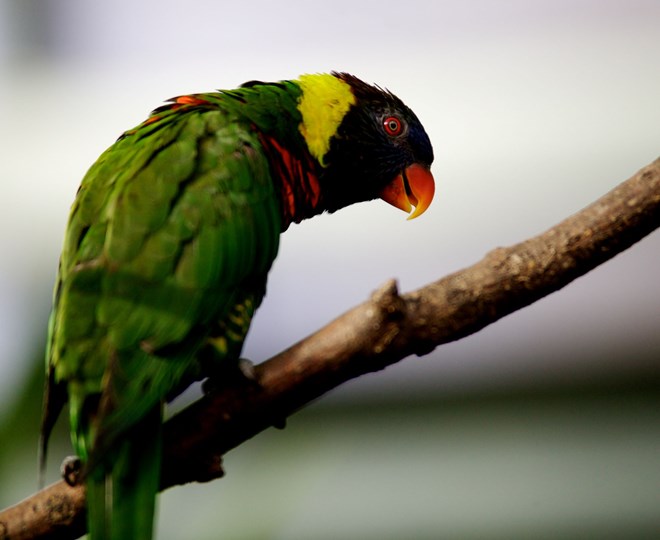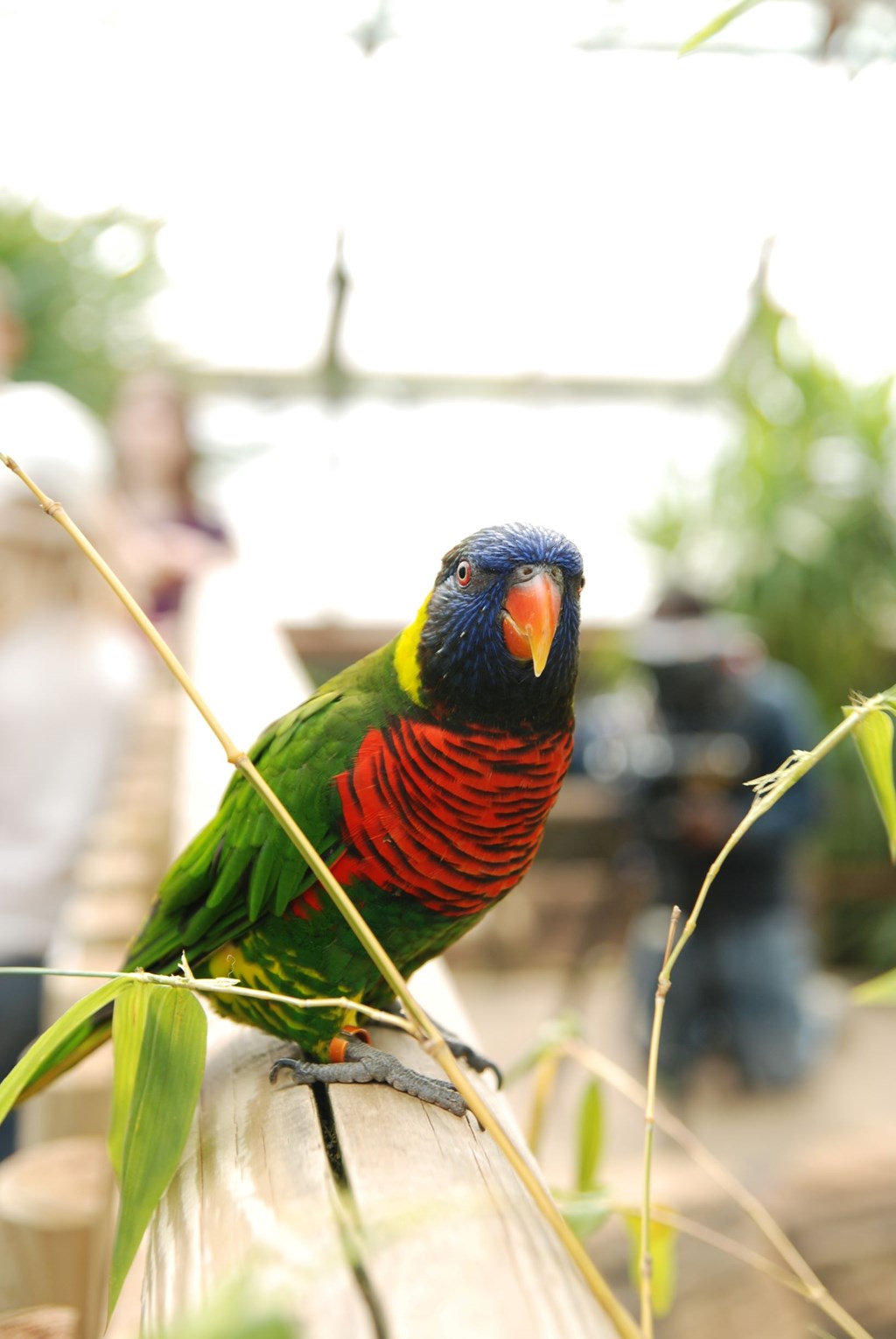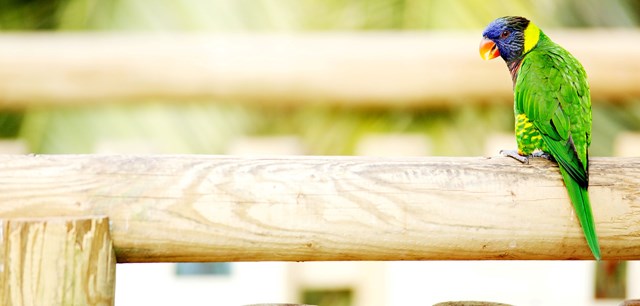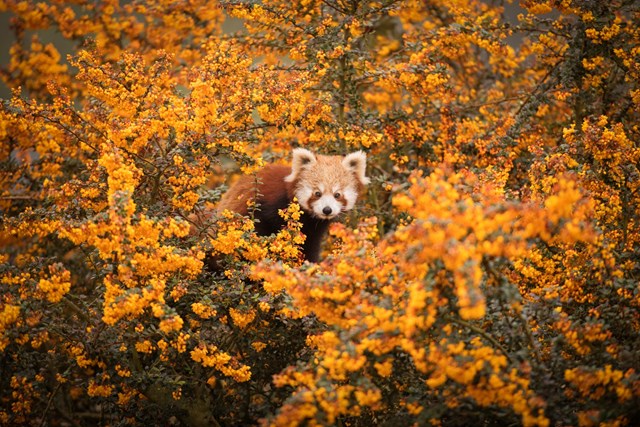
Overview
The coconut lorikeets can be seen in the Park's Rainbow Landing walkthrough in the Foot Safari, where they live alongside the dusky lories.
Walk through their home, where you can enjoy seeing these colourful and exotic birds free flying above your heads.

All about us
| Distribution: | Australia and Eastern Indonesia |
|---|---|
| Habitat: | Rainforest, bush and woodland |
| Height: | Length 25-30cm. Wingspan 17 cm |
| Weight: | 75-157g |
| Lifespan: | 15 - 20 years |
| Threats: | International pet trade |
About us
Scientific name: Trichoglossus moluccanus
The coconut lorikeet is a colourful breed of parrot found in Australia.

Coconut lorikeets have brightly coloured feathers. The head is a deep blue with a bright orange beak and red eyes. A yellow collar meets a green back, wings and tail. In flight, a yellow wing-bar contrasts clearly with the red under wing coverts. The chest is a vibrant red and blue merging into a green and yellow down to the small legs. Males and females look alike, with juveniles having a duller plumage.
Coconut lorikeets feed on flowers, pollen, nectar, seeds and insects. They use their brush-tipped tongue to get the pollen. The tip of the tongue has hairy projections (called papillae) that soak up nectar and catch pollen. They also feed on fruit such as figs and gather at favourite trees including eucalyptus and bottlebrushes.
Coconut lorikeets are usually found in pairs or small flocks, but large noisy groups of over 100 birds are not uncommon. They usually prefer to feed in tree canopies rather than the ground and will travel vast distances to find food. Lorikeets defend their feeding and nesting areas aggressively by chasing off not only smaller birds but also larger and more powerful birds.
Breeding activity can vary depending on the region, climate and food availability. During the Australian spring (September – December) males display and approach females stretched to their full height. With the neck arched, they bob the head and hop along the perch, all the while emitting a low whistle. The pupils constantly dilate and contract during this process. The female's interest will depend on how near to nesting she is. They nest in hollows or cavities in tress, females lay between 1-3 eggs and are incubated for around 25 days. During incubation the male brings the female food and once the chicks hatch both parents will perform feeding duties. It is not unusual for pairs to produce two clutches per year.
When the chicks hatch they are completely naked and born without any feathers. Both male and female lorikeets feed the chicks meaning the hatchlings are completely dependent on the parent for as long as 6 weeks. In 8 weeks the chicks become feathered, and are ready to take their first flight. The young usually fledge the nest between 8-10 weeks old. They appear to mature at around nine months of age; however most birds do not breed until 18 months or two years old.
Their potential for tameness and bright plumage have led to the lorikeets' popularity as cage birds. The species has been heavily traded and wild-caught individuals have been recorded in the international pet trade. Today, rainbow lorikeets are listed on CITES in their Appendix II, meaning lorikeets and lories are not currently threatened with extinction. Overall, the coconut lorikeet remains widespread and common.
Approximately 70% of their day is spent feeding, and lorikeets will travel more than 25km a day to find food.
There are at least 20 recognised subspecies of the widely distributed Rainbow Lorikeet Trichoglossus haematodus.

